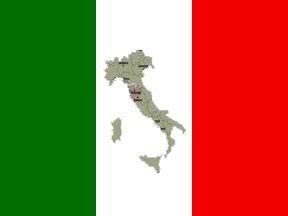
I like when things become simple like when you can boil down life to the the most minute of facts and truths. There is perhaps no better simple truth than – “no water, no people.” The current disaster in Haiti re-emphasizes the importance of water. Soon after news broke of the earthquake, water ( its distribution and availability) were the hot thing to speak about. Even now, approximately a week after the disaster, water is still needed.
While it is rather obvious to us that we need water, I find that we do not have the appreciation for it as the Romans did. We seem to take it for granted, mainly because there is no struggle to get it. But, in ancient times, the availability of water was directly related to the success of a city. It is not hard to understand that water equated life, and it was a revered resource.
Nothing epitomizes this reverence for water like Roman aqueducts and Roman Fountains. While we did do a brief but informative write-up on Roman Aqueducts, there is no doubt that more should be written about them. So, we would like to start a bit of a 'series' of blogs/articles to provide more precise information on various aqueducts and fountains.
[caption id="" align="aligncenter" width="500" caption="Piscina Mirabilis- The cistern where the Serino Aqueduct flowed"]
 [/caption]
[/caption]The aqueduct that we'll speak of first is the Naples Aqueduct, more commonly known as the Serino Aqueduct (L'Acquedotto Augusteo Serino). The beginnings of aqueducts in the region may or may not be of Roman origin. However, the Romans did take the concept of the aqueduct to new heights in the area.
First, a bit of history: the area now known as Naples was essentially a playground for the elite of Rome. The bay of Naples housed an imperial fleet, and the surrounding area was inhabited by the very wealthy of the empire. Given the beauty of the landscape, even to this day, the attraction to the land is understandable.
With the expansion of the city from a Greek colony to a Roman city, it follows that the need for water needed to be greatly improved. The Romans brought additional water to the region via the Aqua Augusta (or the Serino Aqueduct). Its source was the Terminio- Tuoro mountains, just outside of Avellino. The aqueduct spanned 100kms and serviced Naples, Pompeii and Herculaneum. The city was first supplied by the Bolla Aqueduct.
In modern times, there have been two major upgrades to the system: one was an addition made in the 1600s and the other followed Italian unification. The addition made in the 1600s was engineered by Cesare Carmignano, for whom the addition is named. The second addition was made after unification during an outbreak of Cholera in the Naples region.
Finally, and just food for thought, the aforementioned Bolla aqueduct was vital to the regions survival after World War II. For approximately two years (1946-47), it served the city as it attempted to recover.
In the following days and week, we will discuss several other aqueducts and fountains, starting with Pont-du-Gard.
Visit our Home Page!
Find Us On Facebook
Good day!
ReplyDeleteJust introduce myself: I am a man (says my wife), I am 50 years old (hmm, that looks bad isn't it?) and I am a terrible bad programmer (I say myself).
My hobbies: computer (of course), my 17 years old son and of course my wife. I like to play billiard, I do a very little bit and very simple programming in VB and I try to make a site for my billiard-club in the near future.
Peace out, John from Online Payday Today
Good dispatch and this fill someone in on helped me alot in my college assignement. Thank you for your information.
ReplyDelete